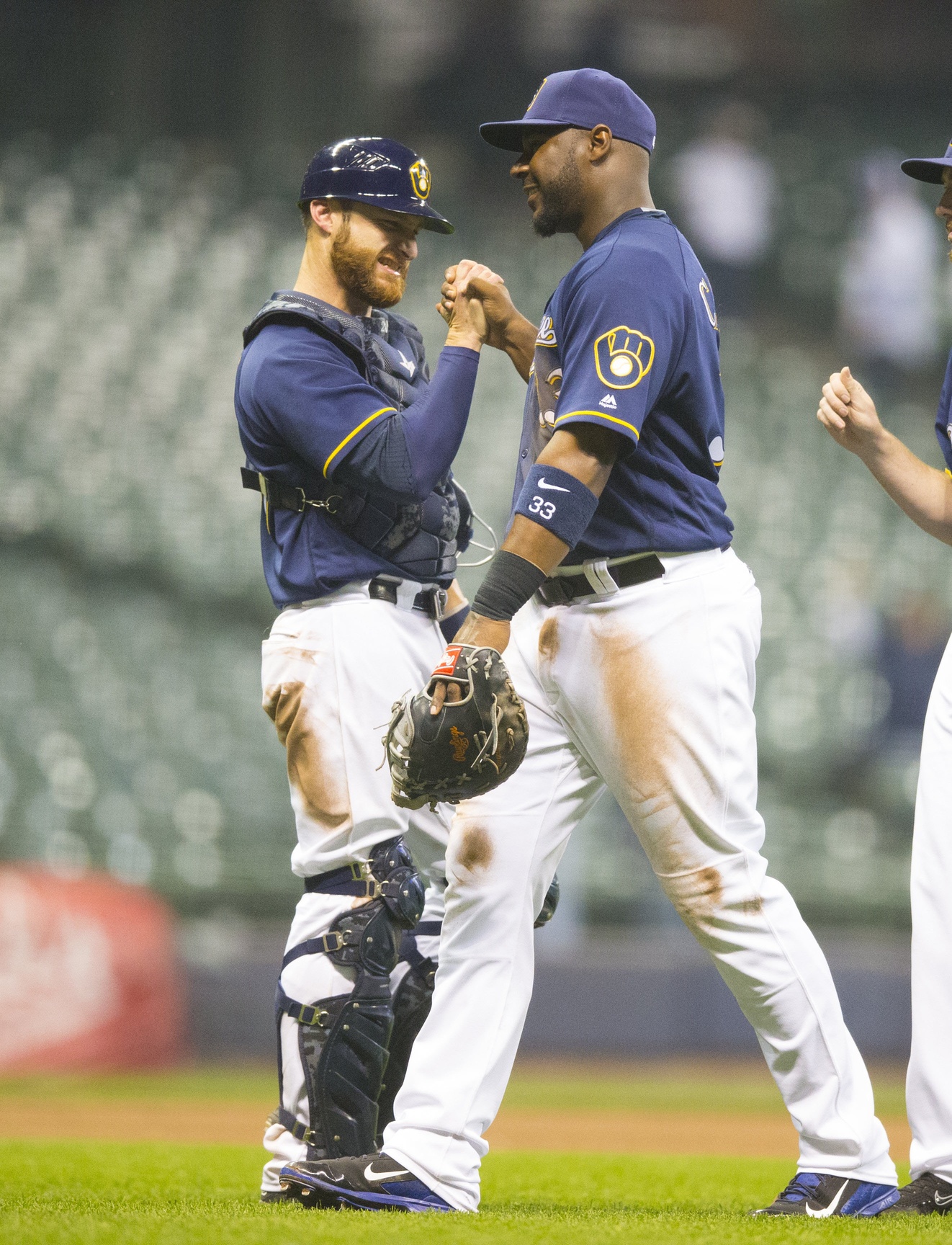This offseason, Brewers GM David Stearns pursued a low-risk, high-reward strategy of building a big-league team. He spent the first few months of his tenure accumulating minor league assets, and he continued to do that as he traded pieces from his big league club. This strategy acknowledged that the team was unlikely to be competitive in 2016. However, rather than follow the Astros’ path of the first few years of this decade and try to win as few games as possible, Stearns brought in some younger players who had lost some shine but might have upside left.
There were quite a few examples of this strategy at the time, but Chris Carter, Will Middlebrooks, and Garin Cecchini were most obvious. Each had been a top prospect but had failed to live to up the hype, and they were generally deemed failures prior to this season. The Brewers, though, were able to offer each a chance to prove they belonged—with the upside for the organization being that a successful season by any one of these players would give the club an unexpected asset.
Middlebrooks and Cecchini have flopped. Aaron Hill has gotten the majority of the playing time at third base thus far, but he is just a short-term option as the Brewers have to be hoping that he plays well enough to be trade bait come July. However, neither Middlebrooks nor Cecchini is exactly beating down the door. Middlebrooks has somehow posted just a .495 OPS despite playing in the hitter-friendly AAA Pacific Coast League, while Cecchini’s .715 OPS is better but still not very good given the context.
Carter, though, has been a revelation through the first month of the season. He has posted a .336 TAv through 24 games, which would clearly be the best mark of his career. This is partially buoyed by his .277 batting average, which itself is being held aloft by a .314 BABIP and is outpacing both his scouting report and his career mark. Even when that number likely comes down simply due to regression to the mean, Carter is posting career-high power numbers and a strikeout rate that is down about four percentage points from his career mark.
If Carter can retain even a portion of this improvement, he will be a valuable big league player. His career .282 TAv establishes him as an above-average hitter who isn’t worth the pain his glove brings, but a TAv at or around .300 would likely make him appealing as a passable starter at first base or as a DH option for AL teams.
While the clear best-case scenario for the Brewers for someone like Carter is that they turn into a superstar, that is obviously unlikely and generally a pie-in-the-sky hope anyway. The most likely ideal outcome is that he becomes good enough to trade for a decent return; however, because he has two years of arbitration control left, the Brewers can afford to be patient and wait for the best deal possible even if it takes until next winter (or later).
If Carter didn’t work out in the same way that Cecchini and Middlebrooks appear to not have, the Brewers would only be out $2.5 million. If he becomes trade-worthy, though, they will have been able to spend that $2.5 million to acquire a prospect package that they simply would not otherwise have had access to.
Chris Carter—or his eventual trade return—is not going to win you a division title. But continually making moves like this during rebuilding years—which the Brewers clearly are attempting to do—is a low-risk way of improving your system depth and building from within. It is this pattern of moves that defines the Brewers rebuild to this point and differentiates it from what the Astros did. The Brewers are not trying to lose as many games as possible; instead, they are gathering assets and waiting, similar in fact to what the Cubs did. The Cubs, in fact, are an excellent model for what the Brewers will be hoping to do; similar to how the Cubs were able to flip a couple journeymen into Jake Arrieta, the Brewers will be trying to buy low on post-hype prospect types and see if anything sticks. And so while Carter is almost certainly not going to be the lynchpin of a rebuild and the club’s best player, the Brewers will be hoping that they can mix enough metaphors to turn a few shots in the dark into some diamonds in the rough.
It’s obviously too early to say whether this process will work. However, the mere existence of any plan at all is encouraging, and the fact that the Brewers seem to be getting a positive outcome already is certainly a first step. The club will have a decision to make in the coming months about what sort of return to hold out for with a potential Carter trade, but the fact that any return at all is possible is a step up from where the Brewers were at the beginning of the offseason.
